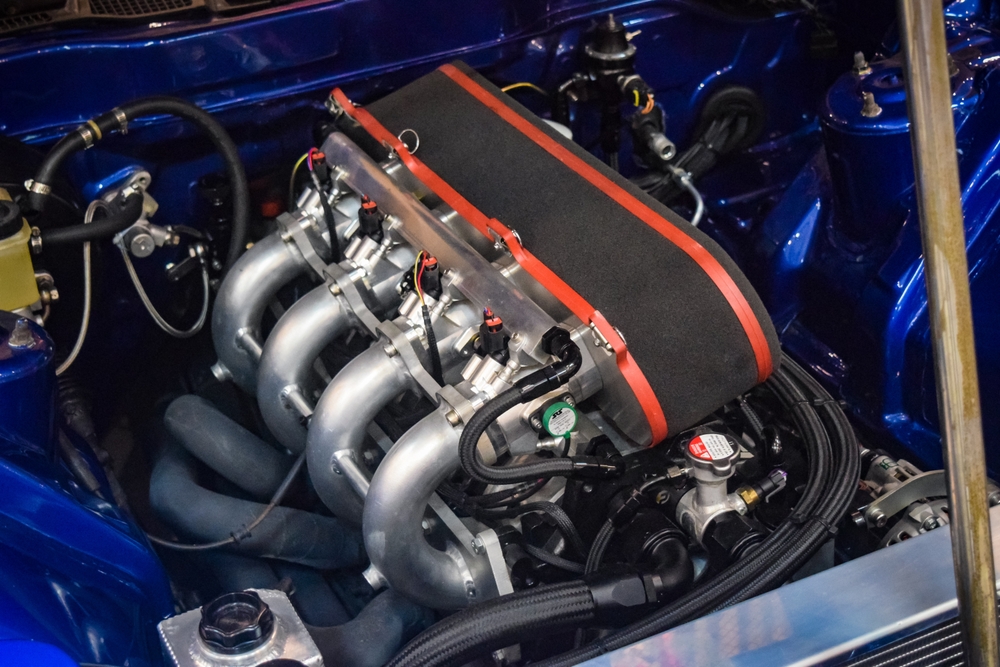The Unsung Hero of Automotive Performance: Intercooling
Imagine a world where your car's engine runs cooler, more efficiently, and with greater power output. This isn't a fantasy from a distant future; it's the reality made possible by intercooling technology. Often overlooked in discussions about automotive performance, intercoolers play a crucial role in maximizing engine efficiency and power, especially in turbocharged and supercharged engines.

A Brief History of Intercooling in Automotive Applications
The concept of intercooling dates back to the early 20th century, with its roots in industrial compressors and marine engines. However, it wasn’t until the 1970s and 1980s that intercoolers began to find their way into mainstream automotive applications. The rise of turbocharged engines in motorsports, particularly in Formula 1 and rally racing, accelerated the development and adoption of intercooling technology.
Types of Intercoolers: Air-to-Air vs. Air-to-Liquid
There are two main types of intercoolers used in automotive applications: air-to-air and air-to-liquid. Air-to-air intercoolers use ambient air to cool the compressed air, while air-to-liquid intercoolers use a liquid coolant. Each type has its advantages and is suited to different applications. Air-to-air intercoolers are simpler and more common in road cars, while air-to-liquid systems are often favored in high-performance and racing applications due to their superior cooling efficiency.
The Impact of Intercooling on Engine Performance
The benefits of intercooling extend far beyond just increased power output. By reducing intake air temperature, intercoolers help prevent engine knock, a potentially damaging phenomenon caused by premature ignition of the fuel-air mixture. This allows for higher compression ratios and more aggressive ignition timing, further enhancing performance. Additionally, cooler intake temperatures can lead to improved fuel efficiency and reduced emissions, making intercoolers an important tool in meeting increasingly stringent environmental regulations.
Challenges and Innovations in Intercooler Design
Despite their benefits, intercoolers present several engineering challenges. The most significant is the need to balance cooling efficiency with minimal pressure drop. As compressed air flows through the intercooler, it experiences resistance, which can reduce the pressure boost provided by the turbocharger or supercharger. Engineers must carefully design intercoolers to maximize heat transfer while minimizing this pressure drop.
Recent innovations in intercooler design have focused on improving efficiency and reducing size. Advanced materials such as carbon fiber and high-density plastics are being explored to create lighter, more compact intercoolers. Some manufacturers are experimenting with 3D-printed intercoolers, allowing for complex internal geometries that optimize airflow and heat transfer.
Intercooling in Modern Performance Cars
Today, intercoolers are a staple in high-performance vehicles, particularly those with forced induction. Manufacturers like Porsche, BMW, and Mercedes-AMG have pushed the boundaries of intercooler technology in their top-tier models. For example, the Porsche 911 GT2 RS uses a water-injection system in conjunction with its intercoolers to further reduce intake temperatures, allowing for even greater power output.
The Future of Intercooling: Integration and Intelligence
As automotive technology continues to evolve, so too does intercooling technology. One emerging trend is the integration of intercoolers with other engine components. Some manufacturers are experimenting with combining intercoolers and intake manifolds into a single unit, reducing weight and improving packaging efficiency.
Another area of development is intelligent intercooling systems. These systems use sensors and advanced control algorithms to optimize cooling based on driving conditions and engine load. For instance, some systems can vary coolant flow or adjust intercooler bypass valves to maintain optimal intake temperatures across a wide range of operating conditions.
Intercooling Beyond Traditional Internal Combustion Engines
While intercoolers are most commonly associated with turbocharged and supercharged gasoline engines, their applications are expanding. In the world of diesel engines, intercoolers play a crucial role in meeting emissions standards while maintaining performance. Some electric vehicle manufacturers are even exploring the use of intercoolers to manage battery and motor temperatures, highlighting the versatility of this technology.
The Enthusiast’s Perspective: Aftermarket Intercoolers
For automotive enthusiasts, aftermarket intercoolers represent an accessible way to boost performance. Upgrading to a larger or more efficient intercooler can unlock additional power in turbocharged vehicles. However, it’s crucial to consider the entire system when making such modifications. An oversized intercooler can actually decrease performance if it introduces too much pressure drop or doesn’t match the characteristics of the turbocharger and engine.
Conclusion: The Cool Future of Automotive Performance
As we look to the future of automotive performance, intercooling technology will undoubtedly play a significant role. From enabling more efficient and powerful engines to contributing to reduced emissions, intercoolers are a critical component in the ongoing evolution of automotive engineering. Whether you’re a performance enthusiast or simply interested in automotive technology, understanding the importance of intercooling provides valuable insight into the complex world of modern engines. As vehicles continue to push the boundaries of performance and efficiency, the humble intercooler will remain an unsung hero, quietly keeping things cool under the hood.





